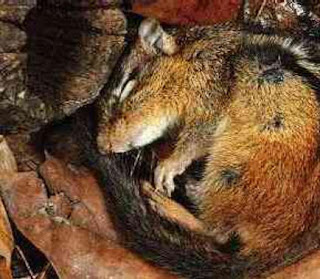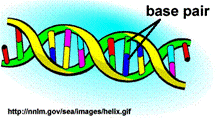

r =b-d or =( # of births - # of deaths) G = rN G = rN(K – N)
N K
mRNA-Codon-to-Amino-Acid Decoder Chart |
|||||||||
|
|
2nd Letter |
|
||||||
1st Letter |
U |
|
C |
|
A |
|
G |
|
3rd Letter |
U |
UUU |
Phenylalanine |
UCU |
Serine |
UAU |
Tyrosine |
UGU |
Cysteine |
U |
C |
|||||||||
UUA |
Leucine |
UAA |
STOP |
UGA |
STOP |
A |
|||
UGG |
Tryptophan |
G |
|||||||
C |
CUU |
Leucine |
CCU |
Proline |
CAU |
Histidine |
CGU |
Arginine |
U |
C |
|||||||||
CAA |
Glutamine |
A |
|||||||
G |
|||||||||
A |
AUU |
Isoleucine |
ACU |
Threonine |
AAU |
Asparagine |
AGU |
Serine |
U |
C |
|||||||||
AAA |
Lysine |
AGA |
Arginine |
A |
|||||
AUG |
Methionine; START |
G |
|||||||
G |
GUU |
Valine |
GCU |
Alanine |
GAU |
Aspartate |
GGU |
Glycine |
U |
C |
|||||||||
GAA |
Glutamate |
A |
|||||||
G |
|||||||||
As you know, the leptin hormone has numerous metabolic functions. Scientists at Boston University recently completed a lengthy study involving 785 randomly selected older patients in apparently normal health: Within 15 years, those patients with lower levels of leptin averaged significantly higher rates of Alzheimer’s disease while those with higher leptin levels had lower Alzheimer’s disease rates. The overall Alzheimer’s disease rate in this study was 11.3%. Some cases of Alzheimer’s disease also tend to run in families.
 source source |
One known function of the leptin hormone is to suppress the appetite by reducing the amount of neuropeptide Y (NPY), a very small protein in the bloodstream. Another function of leptin is to make the inner mitochondrial membrane permeable or “leaky” to protons (H+). Hibernating animals often possess a type of fat tissue that produces large amounts of leptin during the winter, keeping these animals warm with generated heat. |
 source source |
|---|
Peacock males have long colorful tails that scientists hypothesize attract females. An experiment was conducted to determine if the length of the tail (plume) or the number of eye spots attract more females.
|
Number of eyes spots |
Length of plume (cm) |
Number of female visitors |
Male 1 |
30 |
72 |
6 |
Male 2 |
25 |
55 |
5 |
Male 3 |
20 |
60 |
5 |
Male 4 |
15 |
71 |
3 |
A scientist suspects sneaky male behavior in a species of fish that has external fertilization (eggs are fertilized outside the body of the female). Each nest is guarded by a single male. The scientist collects all the eggs in several nests and performs a paternity analysis using gel electrophoresis and DNA from all the males in the area.
It’s spring on campus, and once again the OSU landscaping crew is busy treating the grounds with fertilizer (which also dyes the brown grass green.) However, spring often also brings thunderstorms with heavy rains, washing much of the fertilizer into Theta Pond. The contents of the fertilizer include potassium phosphate, ammonium phosphate and potassium nitrate. Over the course of several days, the pond rapidly develops a distinctly green color. Microscopic examination of the water reveals that this color is the result of a bloom of algae. One morning, many dead fish are floating on the surface of the pond. OSU biologists declare Theta Pond a victim of eutrophication.
Two of the most common causes of human urinary tract infections (UTIs) are E. coli bacteria and Candida albicans, a fungus. These infections may extend from the inner wall of the bladder, through the ureter and sometimes even into the kidney. Urologists microscopically examine urine samples to check for infections or other diseases. Cells from the lining the bladder will often slough off into the urine. Infecting bacterial cells usually adhere to the bladder lining but will also slough off into the urine. An infected patient’s E. coli population was measured for a week. At the end of day 4, an antibiotic was administered, and it rapidly achieved a uniform concentration of 10 mg/mL throughout the urine in the bladder. The daily bacteria counts were:
A group of scientists was studying a stream to evaluate the impacts of contamination coming from a nearby factory. They studied small invertebrate animals upstream and downstream from the point where waste from the factory enters the stream. They went to both spots on the stream and systematically searched for invertebrates at both locations using the same methods for 2 hours. They found almost exactly the same biomass and overall number of invertebrates at both sites. However, the types of organisms differed as noted in the table below.
Invertebrate Group |
Upstream from Contamination Source |
Downstream from Contamination Source |
Chironamids (fly larvae) |
Common |
Very abundant |
Oligochaetes |
Common |
Very abundant |
Caddisfly larvae |
Common |
Not found |
Dragonfly larvae |
Common |
Not found |
Mayfly larvae |
Common |
Not found |
The scientists are concerned that one of the chemicals released by the factory may biomagnify. They measured the concentration of the chemical in many different organisms in the stream and found that primary producers contained 100 mg/kg, primary consumers contained 90 mg/kg, and secondary consumers contained 87 mg/kg. Another chemical released from the factory, dinitrophenol, causes the inner membrane of the mitochondria to become leaky. The waste from the factory also warms up the stream. A third chemical, malathion, released from the factory stops the activity of acetycholinesterase. A long fish (surface area 100 cm2, volume 8 cm3) and short fish (surface area 50 cm2, volume 10 cm3) swim downstream together and reach the warm water from the factory. Fish living upstream have a lower body temperature than the fish living downstream (polluted).
Ten (10) daphnia (a type of aquatic invertebrate) are brought from the stream and placed into a large tank of laboratory water that has good water quality and abundant food. They mature and have offspring in about a week. Following one week, the scientist counted 25 daphnia.
One of the scientists severely cut his foot in the stream. He needs a blood transfusion. He doesn’t know his blood type, but he knows that his mom was blood type A and his dad had blood type B. Hepatitis A can be present in polluted stream and can enter through cuts. The scientist had luckily been vaccinated with a hepatitis A vaccine.
Day |
1 |
2 |
3 |
4 |
5 |
6 |
7 |
N |
10,000 |
100,000 |
1,000,000 |
10,000,000 |
100 |
100 |
1,000 |
N = number of bacteria detected in bladder
Harbor Seals (Phoca vitulina) are the most wide-ranging of the pinnipeds and are found throughout the temperate regions of North America and the Arctic. Their thermal neutral zone has been determined to be from -2° C to 25° C.
There are 17 species of penguins known to science. Emperor penguins are known to dive as deep as 400 meters in search of food. It is known that below 100 meters, the water is dimly lit. The eggs of emperor penguins are pear-shaped and weigh about 450 grams (1 lb). Some eggs are known to be quite large (600 g), while some others are known to be quite small (200 g).
In calico cats, the gene for color is X-linked with two alleles, corresponding to black (XB) and orange (XA).
Remember: Use a #2 pencil to fill in the information on your NCS answer sheet. Put your O-Key Account Username in the boxes indicated for LAST NAME and darken the appropriate circles. Write your Name (Last, First) and “Star” or “No Star” in the space above the boxes containing your O-Key Account Username. Darken the (S) in the last column of the name circles. Enter the number 1014 and darken the corresponding circles in the first 4 columns of the “Student ID.” Failure to perform this correctly will incur a -10pt handling fee. Read all questions and answers carefully before choosing the single BEST response for each question. Feel free to ask the instructor for clarification.
Note: the text in this preview has been modified slighlty to combine sentences into single paragraphs related to the same question set.

The SMN1 gene is responsible for making Survival Motor Neuron Protein, which helps in the processing of mRNA molecules that are particularly important for the maintenance of specialized nerve cells called motor neurons. There are at least 65 mutations in the SMN1 gene that cause spinal muscular atrophy (SMA), a disease characterized by weakness and wasting of muscles involved in crawling, walking, sitting up, and controlling head movement. The gene is found on chromosome 5 from base pairs 70,256,523 to 70,284,592
A mutation results in the appearance of ATT as the third codon in a gene that is 254 codons long. That mutation prevents the mitochondria from using the NADH produced during glycolysis in nerve cells.
The antibiotic was administered at the end of day 4, and the bacterial population declined for 2 days. It then rebounded on day 7. The urologist’s catheter accidentally punctures the wall of the bladder, and E. coli enter the patient’s bloodstream, causing an infection.
Death Valley was formed when the water covering the area evaporated over a geologically significant time period leaving behind pools fed by underground springs. Ichthyologists (fish scientists) have found species of pupfish belonging to the genus Cyprinodon living in these pools and nowhere else in the world. In fact, pools contain fish that are unique to that pool. This geographical pattern of species suggests adaptive radiation. A student who was taking BIOL 1114 but chose to drop the class suggests that it was not adaptive radiation but coevolution that was involved here.
Many of the environments inhabited by pupfish such as these are hypersaline (extremely salty). They maintain a concentration of the salt in their blood below the surrounding water but above that of freshwater fish. To do this they drink the water and excrete salt through their gills. To get the salt back out of their bodies requires that the fish use active transport.
The diet of the Quitobaquito Pupfish consists of green and brown algae.
In 2005, Komisarek and Dorynek found various versions of leptin and leptin receptor genes on chromosome 4 in the Polish population of Holstein-Friesian cattle. This is of interest in predicting and controlling body fat, milk production, and reproduction. A cross between a Holstein-Friesian bull with high body fat and a normal lean cow resulted in all calves with normal body fat